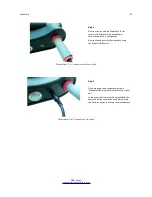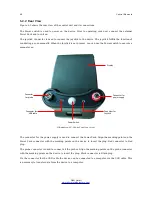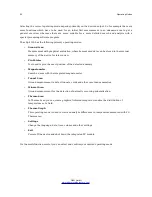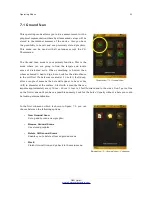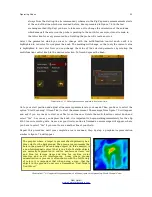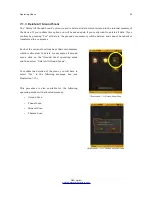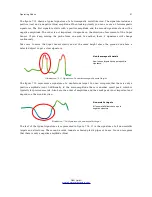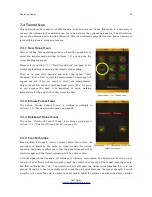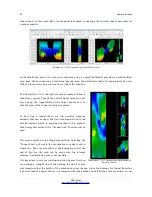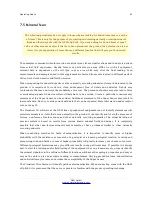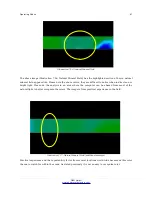
Operating Modes
53
always from the starting line (recommended), whereas in the Zig-Zag mode measurements starts
at the end of the line which was scanned before, like represented in figure 7.4. In the last
scanning method (Zig-Zag) you have to take care not to change the orientation of the antenna,
which means if the arrow on the probe is pointing to the north, for example, it must remain in
that direction for every measured line. Rotating the probe will create an error.
Select the parameter, which you want to change with the multi-function control knob, until it is
highlighted in red color. Now depress the knob. The marking will change, so that only the current value
is highlighted in red color. Now you can change the value of the selected parameter by rotating the
multi-function control knob to the desired selection. To finish, depress the knob.
Go to your start position and adjust all necessary parameters to your needs. Then you have to select the
option “Start Scanning” (Green Tick) to start the measurement. The message from figure 7.5 will appear
and ask if you are ready to start your first scan line now. Rotate the multi-function control knob and
select “Yes”. As soon as you depress the knob, it is important to begin walking immediately for the eXp
4500 is now recording data. As soon as your first scan line is finished a new message will appear, where
you have to select "Yes" if you want to scan another line of your field.
Repeat this procedure until your complete area is scanned. Step by step a graphical representation
similar to figure 7.6 will appear.
OKM GmbH
www.okmmetaldetectors.com
Illustration 7.6: Graphical Representation of a Measurement in Operating Mode Ground Scan
Illustration 7.5: Select parameters and start first scan line
The graphic where a target is present should primarily be a
blue color for the background. The green area represents the
hole in the ground. The red/orange object (in this example) is
a non-ferromagnetic object that is in a hole. Metallic objects
are normally represented in red for non-ferrous items, red
and blue for ferrous items and blue for cavities, water
reserves and earth interferences. Areas where ground
mineralization is present is often shown with the full variety
of colors. It is important that when doing a scan, that the
objects in the ground do not move. Remember “Real Targets
Don't Move!”
Содержание eXp 4500
Страница 1: ...FS Future Series eXp 4500NT Version 1 5 User s Manual ...
Страница 5: ...5 9 2 Control Scans 93 OKM GmbH www okmmetaldetectors com ...
Страница 9: ...1 Introduction CHAPTER 1 Introduction ...
Страница 14: ......
Страница 35: ...3 Technical Specifications CHAPTER 3 Technical Specifications ...
Страница 39: ...4 Scope of Delivery CHAPTER 4 Scope of Delivery ...
Страница 44: ......
Страница 78: ......
Страница 88: ......





